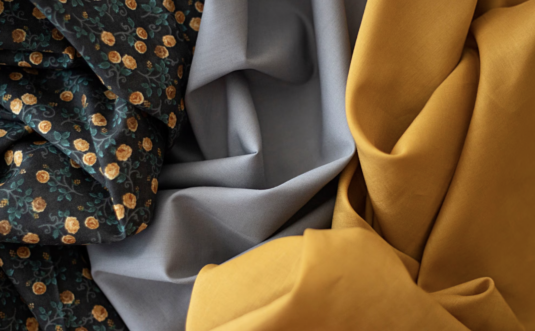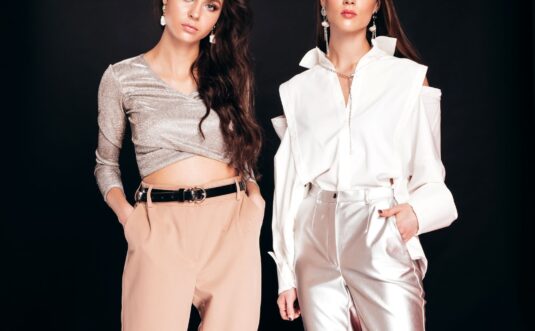Delve into the exciting process of fashion design concepts (DC). Whether you’re aspiring to embark on a career in design or aiming to launch your own label, one of the primary elements you need is a unique concept.
This guide offers insights into the creation and development of fashion concepts, paving the way for you to craft designs that make a statement.
Concept Creation in Fashion Design
Venturing into the fashion design world or even launching your own brand necessitates a significant first step – the formation of a unique concept.
What exactly does a fashion concept entail, and how is one formed?
A fashion concept, in essence, is an assemblage of ideas that inform the types of garments you’ll design as an independent artist or as part of a fashion label. Fashion revolves around a particular manner of dress or lifestyle that resonates with a specific culture or society at any given time.
Your concept can be a mixture of various elements, some thematic, reflecting societal happenings, others stylistic, influenced by a certain era or season. For instance, the incorporation of classic 1920s lace could be a stylistic element. Whatever the components, it’s crucial to collect them, focusing on those that reflect you or your brand’s essence and integrating them into your creations.

Here’s a simplified guide to developing your fashion concept.
Seek Design Inspiration
Inspiration for the design is found in our surroundings. It might be a particular clothing style or shape you love or nostalgia-evoking influences from past eras like Victorian-era corsets.
It’s essential to identify what inspires your designs and gather images representing it. These could come from diverse sources, including fashion magazines, runway shows, or social media platforms like Pinterest.
Once your inspiration is in place, you can delve deeper into the intricacies of your design through these four steps:
- Begin by examining the shape, including any smaller shapes within it, like geometric lines. Allow your imagination to take the reins, creating an outline of your silhouette. At this stage, don’t concern yourself with its potential audience or runway potential. Simply explore the unique elements;
- Next, scrutinize the textures. Determine if these can be applied to your fabric. If the texture is currently unattainable, brainstorm alternatives, creating texture samples when possible;
- Color experimentation is up next. In fashion, color conveys meaning. Identify the colors that resonate with you, considering the feelings they evoke and why you’d want to incorporate them. Could other combinations work? Is a color palette possible?;
- Lines play a pivotal role here, often dictating a garment’s shape, fit, or style. Examine the patterns or arrangements in the lines that catch your eye;
- Finally, consider the pattern. Using the lines and shapes that resonate with you, can you develop patterns that could become prints or embroidery motifs?
Note that this guide serves as a starting point in the creation of unique and compelling fashion DCs, essential for any fashion architect or fashion enthusiast.

Gathering Style Inspirations
Now that you’ve identified something that piques your interest, it’s time to delve deeper by assembling more images, color schemes, and thematic elements. These style inspirations can be sourced from various avenues – be it magazines, the digital realm, or even your admired designers:
- Once you’ve amassed these elements, pinpoint those aspects of the style that resonate most with you. It could be the intricate details in a neckline or a unique pocket design that captures your attention;
- Next, start brainstorming ways you can put your own spin on these elements. Could a back pocket be an interesting addition? Perhaps extending lace detailing down the sleeves could add an exciting flair? The idea here is to contemplate how you can elevate the style to the next level;
- Lastly, think about how to incorporate these elements into your original creations. Could you weave that inspiration into a t-shirt design? How would you do it? Which aspects – lines, colors, or shapes – would you incorporate?
Determine Your Niche
With your style inspirations at your disposal, and clear on what aspects you want to replicate, it’s time to broaden your perspective beyond your sketches.
Having a product idea is wonderful, but to establish a thriving brand, you’ll need customers. To identify your potential clientele, you’ll need to choose a niche. And this choice could vary significantly:
- You might want to focus solely on women’s wear or men’s wear. Perhaps you want to challenge traditional norms with a genderless clothing line, akin to Gucci. Or, you might want to cater exclusively to children’s fashion;
- Once you’ve decided your TA, think about the kind of products you’d be creating. If women’s wear is your focus, what kind of pieces will you produce? Could it be formal wear, evening wear, or a range of dresses? Would your collection be ready-to-wear or lean towards high fashion? Will it cater to a luxury market or aim to be affordable?;
- After narrowing down these aspects, your planning will truly be in full swing, allowing you to start putting the more formal components of your concept into place;
- It’s important to remember that your concept should be distinctly yours. While your favorite fashion influencer might inspire you, your interpretation of their work should shine through. Your brand identity should encapsulate your values.
Moreover, your concept should prominently feature your Unique Selling Proposition (USP) as it will set you apart from your competitors. Your USP could be anything from hand stitching, custom-designed prints, or using sustainable and organic materials. Make sure this key aspect is strongly communicated in your brand’s narrative!
Identifying Your Ideal Customer
Having chosen your sector, carved out your niche, and pinpointed your USP, the next vital step is to delineate your target audience. This can be done by asking a single, all-important question: Who are you creating for?
Consider the following steps:
- Strive for a precise answer. If your creations are for high-achieving professionals with a penchant for luxury suits and superior-quality fabrics, then that’s your target demographic – embrace it! By thoroughly understanding your target audience, you can create products that truly resonate with them;
- At this juncture, it’s beneficial to discern if you have a clear brand message, and whether you have allowed sufficient room for brand evolution. For instance, if you’re focusing on exquisite lace dresses, how can your brand diversify its designs and offerings after two, three, or even five years?;
- Scrutinize your competitors to understand their initial starting point and subsequent growth trajectory. Observe their target audience and recognize how they have expanded to cater to the evolving needs of their clientele. A brand that outpaces its target audience or abruptly changes its target mid-journey often faces a gradual decline, as the audience starts to feel disconnected from the shifting focus;
- Finally, take a moment to ask yourself: Would people be inclined to wear my products? And if so, why? As a consumer yourself, you’re familiar with your style preferences. If you wouldn’t wear a product you’ve created, it’s likely a red flag. Reflect on what motivates you to purchase garments or what draws you to specific designer collections, then imbibe these insights into your concepts and ideas.
Remember, a fashion concept is intensely personal to the architect who cultivates and brings together the ideas. Don’t shy away from amalgamating diverse influences and ideas as you see fit. These will lay a robust foundation for your unique brand to flourish.
Key Takeaways
| Steps | Descriptions |
|---|---|
| Inspiration Gathering | Start by collecting images, themes, and color palettes that inspire you. This could be from any source, including magazines, the internet, or even your favorite influencers. |
| Design & Style | Analyze your inspirations to identify shapes, textures, colors, lines, and patterns you resonate with. Consider how you could incorporate these elements into your unique designs. |
| Define Your Sector | Decide on your niche. This could range from menswear, womenswear, children’s wear, to unisex fashion. Think about the type of clothing you want to produce. |
| Identify Your USP | Discover your Unique Selling Proposition (USP) that sets your brand apart. This could be hand-stitching, hand-drawn prints, use of sustainable materials, etc. |
| Target Audience | Define your target audience by asking, “Who are you creating for?” Understand their needs and preferences. |
| Consider Brand Growth | Ensure there is room for growth and evolution in your brand. Study your competitors and their growth strategies. |
| Assess Wearability | Evaluate whether your creations would appeal to your target audience. Would you wear your designs? If not, it’s a warning sign. |
Mastering Fashion Design Concepts: Essential Tips and Best Practices
To further aid your journey in the realm of fashion design, below are some pivotal insights and strategies to keep in mind as you develop your fashion concepts:
- Trend Analysis: Regularly monitor fashion trends to ensure your designs are always current and relevant. Subscribe to industry newsletters, follow influential fashion blogs, and attend fashion shows and expos;
- Sustainability: With growing awareness about the environmental impact of the fashion industry, consider incorporating sustainable practices into your creation process. This could be through the use of eco-friendly materials, ethical sourcing, or promoting recycling and upcycling;
- Inclusivity: Create for a diverse range of body types, ages, and cultures. Inclusivity in fashion not only caters to a wider audience but also helps to challenge and expand traditional notions of beauty;
- Brand Storytelling: Develop a compelling brand story that resonates with your target audience. A strong narrative can create an emotional connection with consumers and make your brand more memorable;
- Invest in Quality: Ensure that every piece you craft upholds high standards of quality. This applies to every aspect of your clothing, from the fabric used, the craftsmanship involved, and even to the packaging;
- Embrace Technology: Utilize digital tools and technologies to enhance your creative process. From using specialized software to virtual fittings, technology can provide innovative solutions to traditional challenges in design;
- Network: Establish relationships with other professionals in the industry. This includes other artists, manufacturers, suppliers, and retailers. These connections can lead to collaborations, partnerships, and new opportunities;
- Continual Learning: Stay open to learning and improving your skills. This could be through attending workshops, taking courses, or simply learning from your experiences and feedback from customers.
In the world of fashion, creativity, and business acumen must walk hand-in-hand. As designers, the challenge lies not just in creating beautiful pieces, but also in understanding the market and successfully catering to the needs and wants of consumers.
Final Thoughts
Creating a fashion DC is an intricate process that demands creativity, market understanding, and strategic planning. Each creation must be rooted in a unique inspiration that is skillfully transposed into a style that is fresh and resonant.
Defining the niche, identifying a unique selling point, and understanding your target audience are crucial steps in carving out your own space in the competitive world of fashion. Furthermore, a successful fashion concept must leave room for brand evolution and growth, adapting to trends and changing customer needs.
Ultimately, the success of a fashion concept hinges on its wearability. If a design doesn’t resonate with its intended wearer, it won’t succeed, regardless of how innovative or creative it might be. Hence, designers must always consider their end consumers when crafting their creations.
In sum, the development of a fashion concept is a journey of self-expression, market comprehension, and strategic execution, with the ultimate goal of creating products that resonate with a chosen audience.




